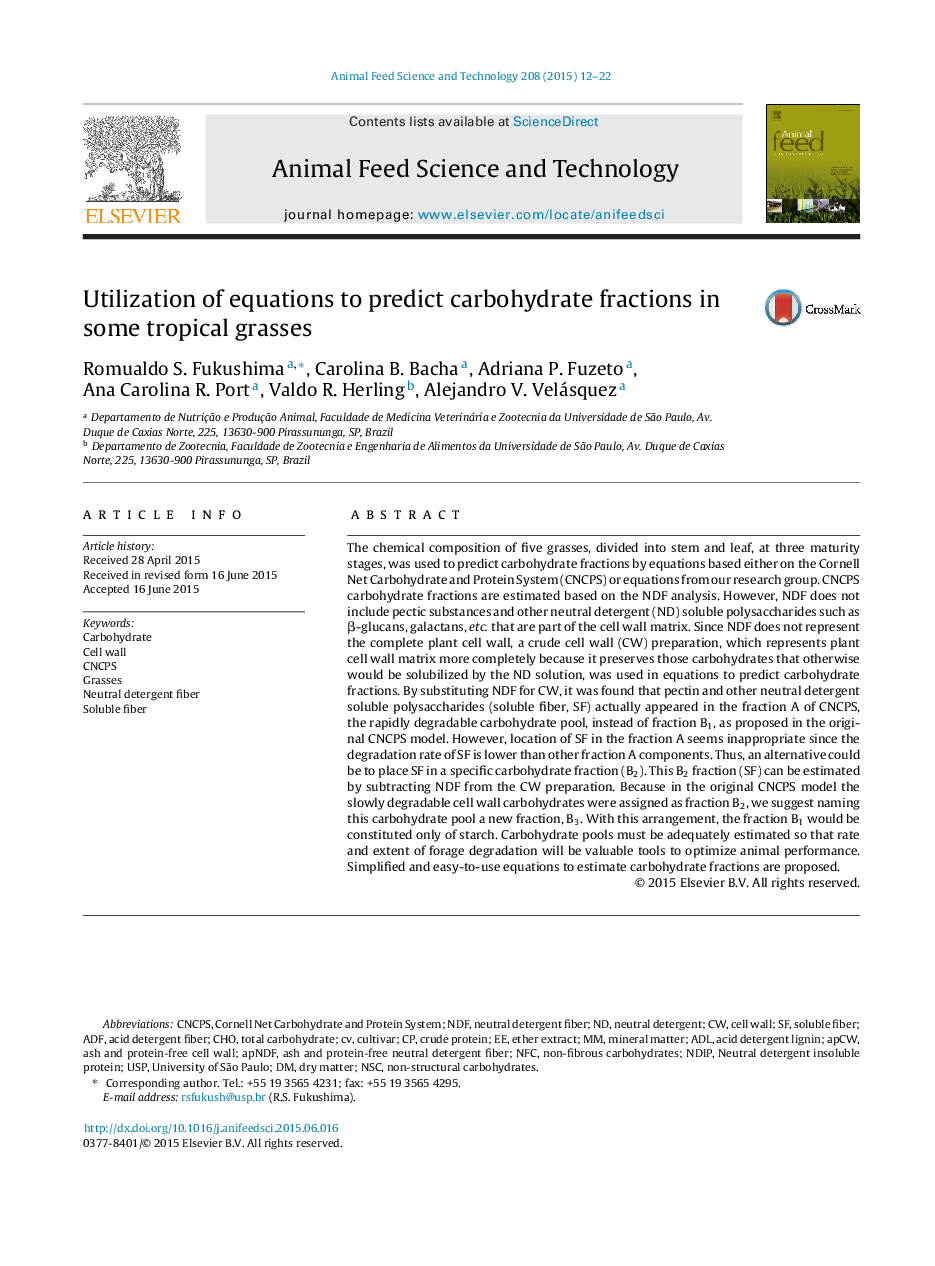| Article ID | Journal | Published Year | Pages | File Type |
|---|---|---|---|---|
| 2419482 | Animal Feed Science and Technology | 2015 | 11 Pages |
•We compared the traditional CNCPS carbohydrate equations with our equations.•Our carbohydrate equations are easier to use than CNCPS equations.•An equation for the neutral detergent soluble carbohydrates is proposed.•We simplified the undegradable cell wall equation to express lignin on DM basis.•A new equation for estimating total plant carbohydrate content is proposed.
The chemical composition of five grasses, divided into stem and leaf, at three maturity stages, was used to predict carbohydrate fractions by equations based either on the Cornell Net Carbohydrate and Protein System (CNCPS) or equations from our research group. CNCPS carbohydrate fractions are estimated based on the NDF analysis. However, NDF does not include pectic substances and other neutral detergent (ND) soluble polysaccharides such as β-glucans, galactans, etc. that are part of the cell wall matrix. Since NDF does not represent the complete plant cell wall, a crude cell wall (CW) preparation, which represents plant cell wall matrix more completely because it preserves those carbohydrates that otherwise would be solubilized by the ND solution, was used in equations to predict carbohydrate fractions. By substituting NDF for CW, it was found that pectin and other neutral detergent soluble polysaccharides (soluble fiber, SF) actually appeared in the fraction A of CNCPS, the rapidly degradable carbohydrate pool, instead of fraction B1, as proposed in the original CNCPS model. However, location of SF in the fraction A seems inappropriate since the degradation rate of SF is lower than other fraction A components. Thus, an alternative could be to place SF in a specific carbohydrate fraction (B2). This B2 fraction (SF) can be estimated by subtracting NDF from the CW preparation. Because in the original CNCPS model the slowly degradable cell wall carbohydrates were assigned as fraction B2, we suggest naming this carbohydrate pool a new fraction, B3. With this arrangement, the fraction B1 would be constituted only of starch. Carbohydrate pools must be adequately estimated so that rate and extent of forage degradation will be valuable tools to optimize animal performance. Simplified and easy-to-use equations to estimate carbohydrate fractions are proposed.
